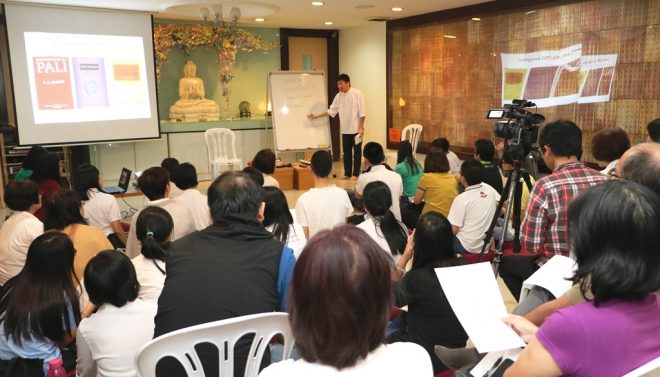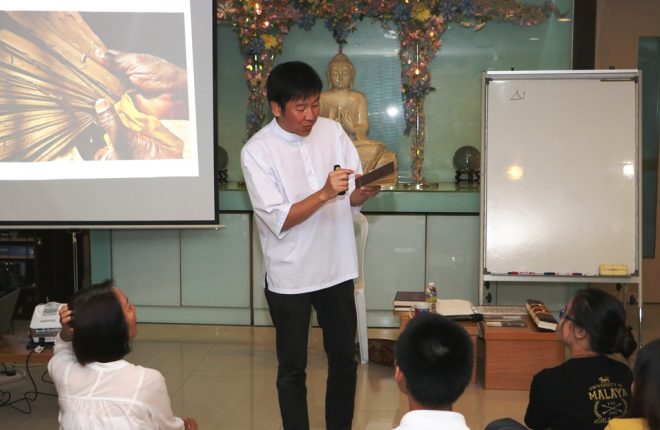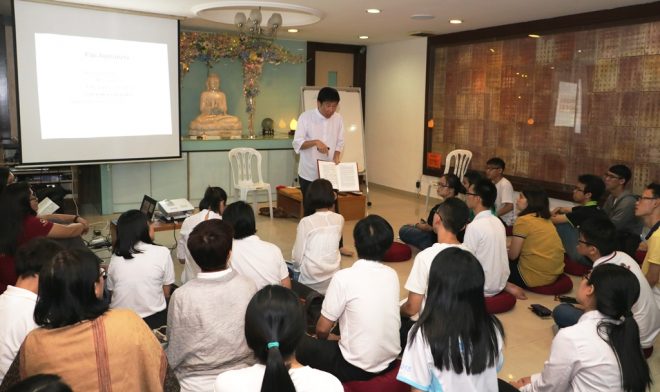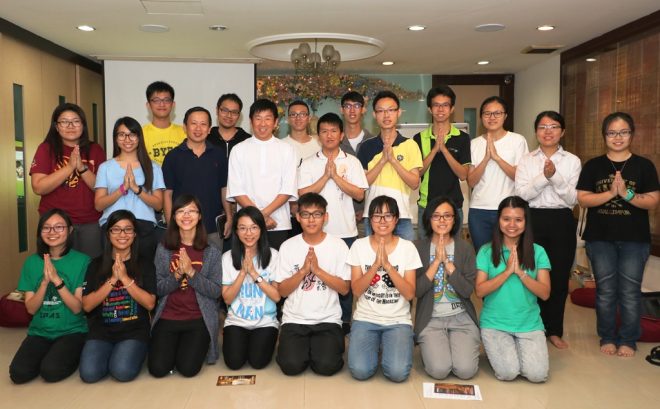Lecture on Pāli language and literature
Lecture on Pāli language and literature
On Friday 14 April, Bro. Tan was invited to present a special lecture on Pāli language by Persatuan Buddhist Universiti Malaya’s (PBUM) Miao Xi Dhamma Speaker Training Workshop. The talk held at the Young Buddhist Association of Malaysia (YBAM) Headquarters was well-attended by young Dhamma-speaker trainees and Nalandians.
‘Pālibhasa’ (which literally means ‘language of the text’) was derived from the dialects widely-spoken in ancient Magadha and its neighbouring polities during the Buddha’s time. Back then, it was known as ‘Magadhī’, and it existed alongside Sanskrit during the Mahājanapada Period (around the 6th century BCE).
Tracing its interesting development back to the Indo-European family of languages, Bro. Tan introduced the basic linguistic structure of Palī, including its alphabets and grammar. He then guided participants in reading and understanding a few stanzas of basic Palī texts.
Bro. Tan also spoke about the significance of the language in the preservation of the Buddha’s teachings, such as in the first rehearsal of the Dhamma-Vinaya at Rajagaha three months after the Buddha’s Māha Parinibbāna. During the fourth Sanghayana in Aluvihāre, Sri Lanka (circa 80 BCE), the Buddha’s words were inscribed for the first time on ola palm leaves due to external threats, which might have led to the perish of the hitherto orally-preserved Dhamma.
Fortunately for us today, Pāli language is written in various scripts, including Devanagiri and Roman, for the convenience of all to study the teachings of the Buddha.
Bro. Tan remarked that the most precise meaning of the Dhamma is still preserved in the Pāli language. Thus, there is great value in learning it – as it leads us directly to the exact utterances of the Blessed One. All avid Dhamma learners and practitioners are thus encouraged to learn this rich and beautiful language.






